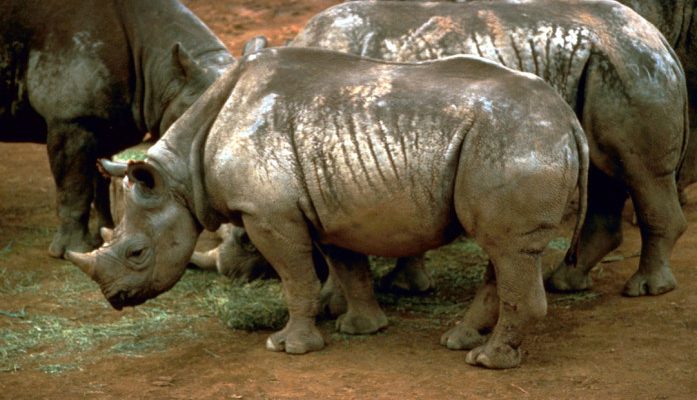
Diceros bicornis
Diceros bicornis NatureServe Explorer Species Reports — NatureServe Explorer is a source for authoritative conservation information on more than 50,000 plants, animals and ecological communtities of the U.S and Canada. NatureServe Explorer provides in-depth information on rare and endangered species, but includes common plants and animals too. NatureServe Explorer is a product of NatureServe in collaboration with the Natural Heritage Network.
ITIS Reports — ITIS (the Integrated Taxonomic Information System) is a source for authoritative taxonomic information on plants, animals, fungi, and microbes of North America and the world.
FWS Digital Media Library — The U.S. Fish and Wildlife Service’s National Digital Library is a searchable collection of selected images, historical artifacts, audio clips, publications, and video. The southern black rhinoceros or Cape rhinoceros (Diceros bicornis bicornis) is an extinct subspecies of the black rhinoceros that was once abundant in South Africa from the Cape Province to Transvaal, southern Namibia, and possibly also Lesotho and southern Botswana. It was brought to extinction by excessive hunting and habitat destruction around 1850. The black rhinoceros or hook-lipped rhinoceros (Diceros bicornis) is a species of rhinoceros, native to eastern and southern Africa including Angola, Botswana, Kenya, Malawi, Mozambique, Namibia, South Africa, Eswatini, Tanzania, Zambia, and Zimbabwe. Although the rhinoceros is referred to as black, its colours vary from brown to grey.
The other African rhinoceros is the white rhinoceros(Ceratotherium simum).
| Status | Date Listed | Lead Region | Where Listed |
|---|---|---|---|
| Endangered | 07/14/1980 | Foreign (Headquarters) | Sub-Saharan Africa |
| 07/14/1980 | 45 FR 47352 47354 | ETWP; Black Rhinoceros |
| 10/01/1979 | 44 FR 56618 56620 | ETWP; Proposed Endangered Status for the Black Rhinoceros |












